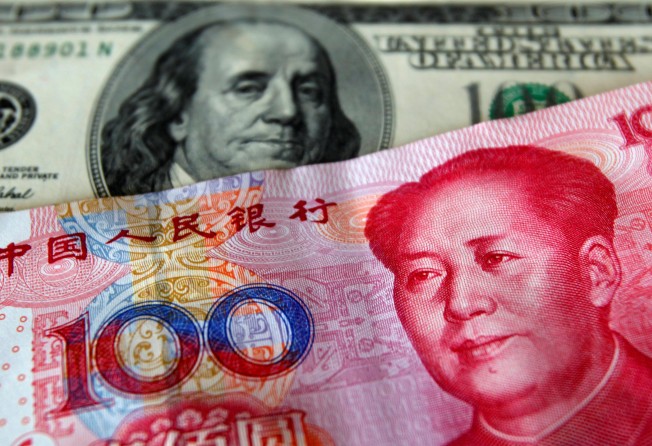PBOC takes aim at yuan shorts, raises forex reserve requirement to 20 per cent after currency tumbles to 15-month low
PBOC boosts the reserve requirement on foreign currency forwards to 20 pc from zero, spurring offshore yuan 1 pc higher from its intraday low

The People’s Bank of China took action to defend against further currency devaluation on Friday, triggering a sharp rebound in the offshore yuan in evening trade after the currency eased to a 15-month low earlier in the day amid escalating trade tensions between Washington and Beijing.
The currency traded by international investors outside mainland China was at 6.8329 in evening quotes, up more than 1 per cent from its intraday low of 6.9122.
The bounce came after the PBOC took action to defend the currency by adjusting the reserve requirement on foreign currency forwards to 20 per cent from zero, which makes it more costly for traders to short the yuan.
“The PBOC has led the yuan bounce. However, traders generally believe the yuan will continue to fall to the 6.8 to 6.9 level or it may even slip to 7 yuan per US dollar in the next few months or early next year,” said Martin Lam, chief analyst of Asia-Pacific of currency trading firm ATFX.
Stephen Innes, head of trading for Asia-Pacific at Oanda, said the PBOC cut the reserve requirement ratio for the forward contract in September 2017, when the yuan was considered too strong.
“This time around the rule is back in place in a move seen as an effort to restrict dollar purchases when the yuan was weakening. Universally traders would wholeheartedly agree this is a more favourable approach than overt intervention. Besides, this does suggest that the PBOC will refrain from using the currency as a ploy in trade war negotiations,” Innes said.
Despite Friday’s rebound, the offshore yuan remains at its lowest level in roughly 14 months, only slightly better than in the morning when it was trading at a level on par with mid-May last year.
The yuan has lost 8 per cent in the past six weeks since the trade war began and as the PBOC kept interest rates unchanged on June 14 despite a rate rise by the US Federal Reserve. The currency has also shed 10 per cent from its peak at 6.2352 per dollar in March.
Traders expect the offshore yuan to trade down to close to 7 yuan per dollar next year.
“The trade war would remain a worries for many traders,” Innes said. “The PBOC intervention may lead the yuan to become stable but there is no foundation for the yuan to strengthen much higher.”
The PBOC on Friday set the mid-price for yuan trading at 6.8322, which is 0.6 per cent lower than Thursday’s level. Traders can trade up to two per cent above or below the midpoint set by the central bank. The central bank is seen to be relying on market forces for a gradual depreciation of the yuan to offset the impact from the trade war.
Onshore yuan, which is traded by mainland traders, also dropped to its lowest level in 15 months at 6.8724 yuan per dollar on Friday morning, down 0.5 per cent from Thursday. It once dropped down to 6.8926 in the afternoon before bounced back to close at 6.8309.